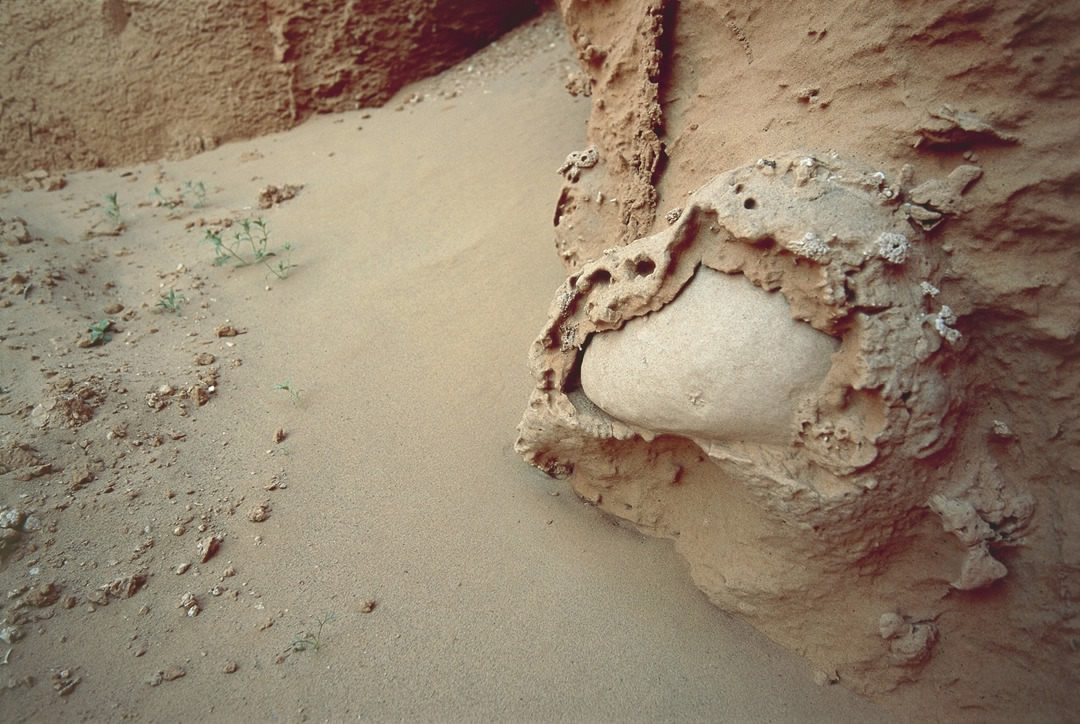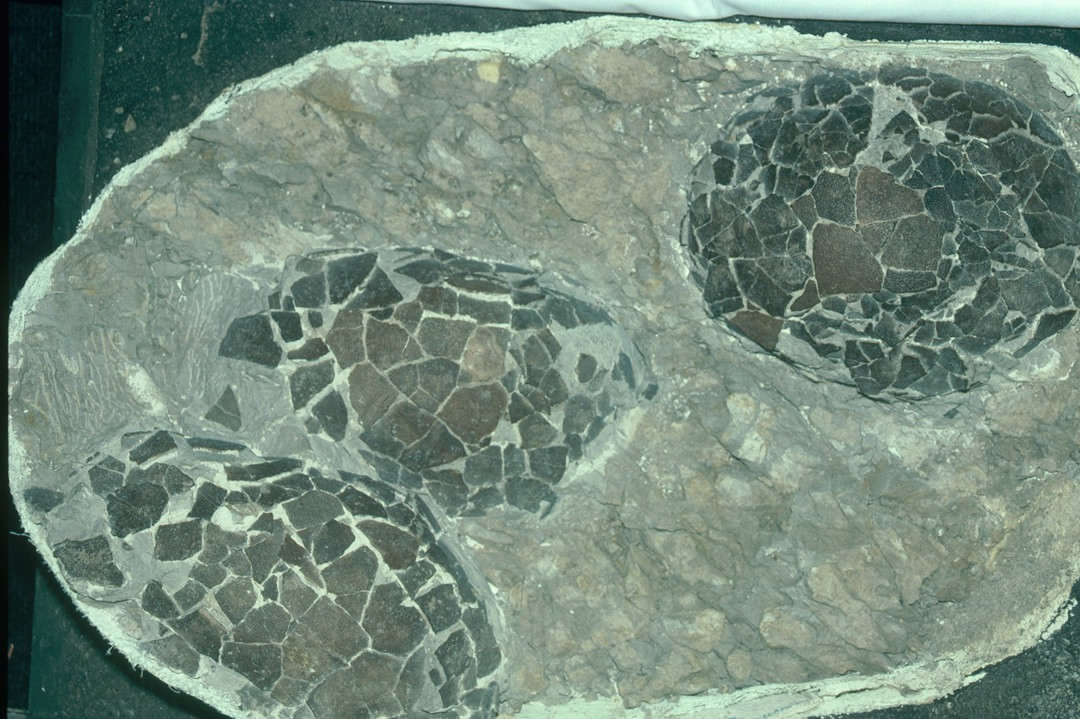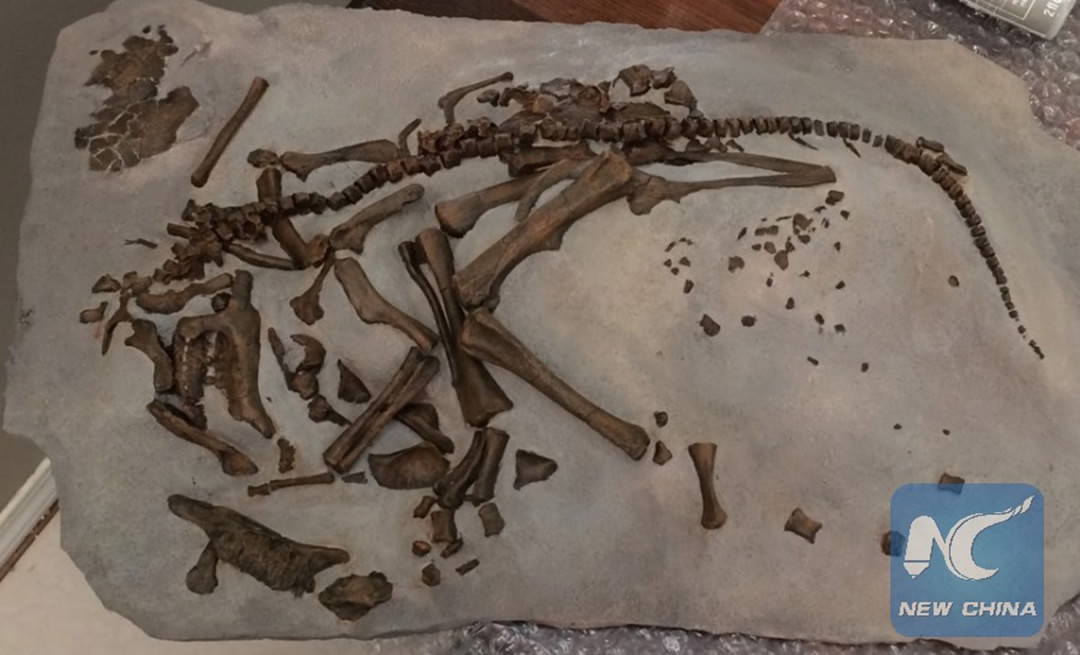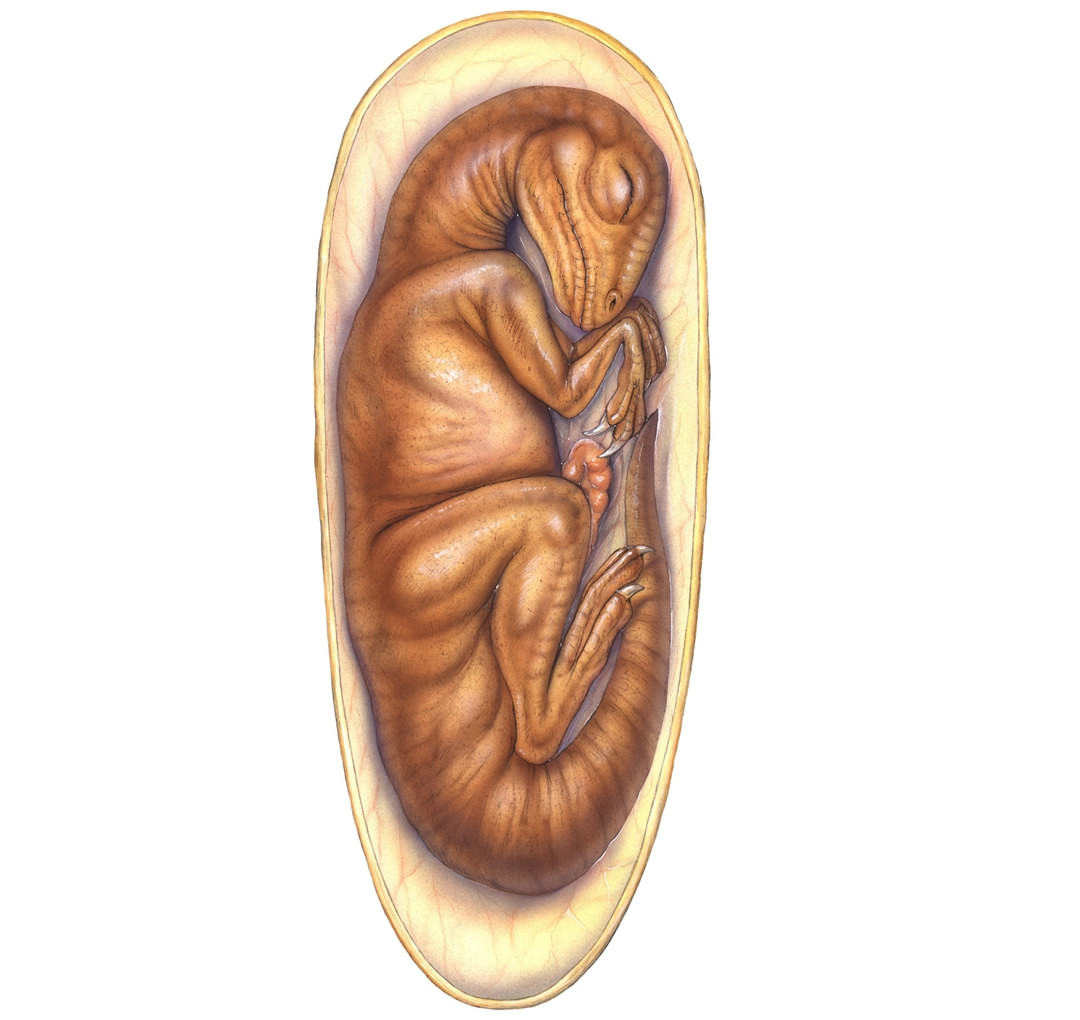New research on the teeth of fossilized dinosaur embryos indicated that the eggs of some dinosaurs took between about three and six months to hatch, researchers said Monday.

A fossilized dinosaur egg in the Gobi Desert, Bayanzag Valley, Mongolia /CFP Photo
Because birds are widely believed to be direct descendants of dinosaurs, scientists have long assumed that the duration of dinosaur incubation was similar to birds, whose eggs typically hatch within 11 to 85 days. Comparable-sized reptilian eggs typically take twice as long - from weeks to many months.
The new study, published in the US journal Proceedings of the National Academy of Science, showed that contrary to previous assumptions, dinosaur incubation bears a closer resemblance to reptiles than to birds.

A clutch of Protoceratops eggs, a dinosaur from the Cretaceous Period. The eggs are about 100 millimeters in diameter. /CFP Photo
"Some of the greatest riddles about dinosaurs pertain to their embryology - virtually nothing is known," lead author Gregory Erickson, professor of the Florida State University, said in a statement. "Did their eggs incubate slowly like their reptilian cousins - crocodilians and lizards? Or rapidly like living dinosaurs - the birds?"
In the new study, the research team looked at the fossilized teeth of two extremely well-preserved "bird-like" ornithischian dinosaur embryos on each end of the size spectrum.
One is Protoceratops, a pig-sized dinosaur found in Asia, whose eggs were quite small at 194 grams, while the other is Hypacrosaurus, a very large duck-billed dinosaur found in Alberta, Canada, with eggs weighing more than four kilograms.

Researchers examine a fossilized embryo of the dinosaur Hypacrosaurus. /Xinhua Photo
First, the researchers scanned the embryonic jaws of the two dinosaurs with computed tomography (CT) to visualize the forming teeth.
They then used an advanced microscope to look for and analyze the pattern of "von Ebner" lines - growth lines that are present in the teeth of all animals, humans included.
"These are the lines that are laid down when any animal's teeth develops," Erickson explained. "They're kind of like tree rings, but they're put down daily. And so we could literally count them to see how long each dinosaur had been developing."
The results showed that the Protoceratops embryos were about three months old when they died and the Hypacrosaurus embryos were about six months old.

Dinosaur embryo /CFP Photo
The researchers noted that the results might be quite different if they were able to analyze a more "bird-like" dinosaur, like Velociraptor. But unfortunately, very few fossilized dinosaur embryos have been discovered.
The study said prolonged incubation exposed dinosaur eggs and attending parents to predators, starvation, and environmental disruptions such as flooding.
In addition, slower embryonic development might have put them at a disadvantage compared to other animals that survived the mass extinction event that occurred 65 million years ago.
(With inputs from Xinhua News Agency)









